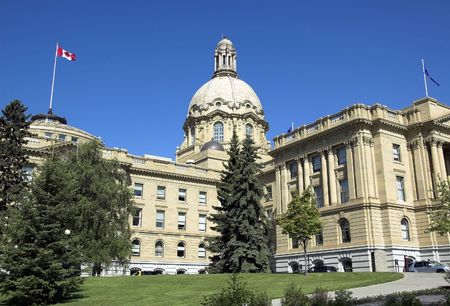
Ever wondered what it’s like to work as an editor at Hansard? Well, given that there are 15 Hansards published across the country, it depends on who you ask. The staffing, production processes and timelines vary from one jurisdiction to another, but here’s a quick snapshot of what it’s like in Alberta.
Our production team consists of a managing editor, three senior editors, an operations assistant, an indexer and 25 sessional staff. The sessional staff are made up of input editors and copy editors/proofreaders, two of whom are also editorial assistants. While the first six individuals work full-time, sessional staff work during sittings of the legislature and when there are intersessional meetings of all-party legislative committees. There is some summer project work available to sessional staff; for example, we’ve digitized all of the Assembly transcripts going back to when Alberta Hansard started in 1972.
In our first stage of production, input editors work on five-minute portions (takes) of digital audio to produce a draft known as the Blues. In addition to transcribing the audio, input editors are responsible for knowing and applying Hansard style and format rules and for researching any items that come up in their take. Blues are made available digitally and in hard copy to MLAs and the press gallery, but the Blues are unofficial and may not be quoted as the official record.
In the next stage copy editors combine three consecutive takes and listen to the audio while making any necessary corrections to style, format, research or mishearings. Hansard is substantially verbatim, so copy editors need to use a light hand while still ensuring stylistic consistency.
Copy editors are also trained in proofreading, which is the third stage of production. Proofreaders don’t listen to the audio unless they have reason to believe it wasn’t accurately transcribed, and they don’t work on the same portions they copy edited.
When all portions have been proofread, a senior editor combines them into one document and typesets it. Final checks and adjustments take place at this stage. The transcript is then posted to the assembly website and, in the case of legislature sittings, sent to a commercial printer.
We invest a great deal into training our staff. Input editors, for example, train full-time for four weeks. That training is supplemented by detailed instructions and resource materials. The Alberta Hansard style guide is 453 pages and includes a style section (capitalization, numbers, punctuation, etc.), a format section (how to treat procedural matters like opening and adjournment of sittings, emergency debate and points of order), a 64-page glossary and a 152-page list of research items such as names of organizations, titles of commissions and reports, and other frequently mentioned items. The Hansard manual is the primary reference for our staff; it was developed over many years and is continually updated and revised.
After the manual, the Canadian Oxford Dictionary is our go-to resource for spelling, capitalization and verification of entities. Every desk has a copy of the Hansard manual and COD, as it’s affectionately known, and there is a large collection of materials in our resource centre to consult for more elusive items.
To see a larger picture of provincial, territorial and federal Hansards, visit the Hansard Association of Canada website.
~~~
The Editors’ Weekly is the official blog of Editors Canada. Contact us.
Discover more from The Editors' Weekly
Subscribe to get the latest posts sent to your email.
